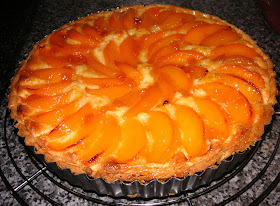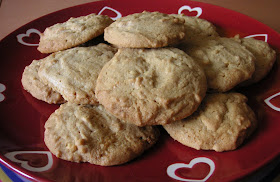
Last July (which feels like years ago!) I made a pineapple cake from the “Coronation Cakes and Pastries” booklet provided free with 23rd January 1937 edition of Woman’s World magazine. This was the coronation of King George VI i.e. the present Queen’s father. Of course, nowadays he’s known to us as Colin Firth, thanks to the wonderful film “The King’s Speech”.
As it’s Oscar weekend I thought it would be fitting to revisit this booklet and make another recipe from it. It’s my way of supporting the King’s Speech and hoping that it gets all the accolades it deserves, (it probably won’t, but I’ll settle for Colin Firth and Geoffrey Rush coming out of it with shiny new trinkets for their mantelpieces!)
Anyway, the cake. Light fruit cakes are a thing of beauty and this one relies solely on sultanas for its fruit. I do love sultanas. Often I’ll use extra sultanas in a cake rather than the currants the recipe lists. They’re golden and soft and sweet and I can just eat them by the handful!
The original recipe recommended dusting the baked cake with caster sugar but I did this before the cake went in the oven to ensure a nice crisp top. I also did 1.5x the quantities as it looked a bit mean (the quantities set out below are the quantities that I used).
This is probably close to Mr CC’s perfect style of cake. It’s a beautiful cake to enjoy with a cup of tea and a sit down!
Ingredients
170g/6oz unsalted butter, at room temperature
170g/6oz caster sugar – plus extra to sprinkle on top
3 eggs
340g/12oz self raising flour
225g/8oz sultanas
6 tablespoons milk
Method
Preheat oven to 180˚C/fan oven 160˚C/350˚F/ Gas mark 4.
Line a 20cm round springform tin with baking paper.
Beat together the butter and sugar until light and creamy. Take your time on this stage to get lots of air into the mix.
Beat in the eggs, one at a time.
Stir in the flour.
Stir in the sultanas.
Stir in the milk until the dough is soft. Add more milk if necessary.
Spoon into the prepared tin and level the surface.
Sprinkle an extra 2-3 tablespoons of sugar over the surface of the cake.
Bake for approximately 1.5 hours or until a skewer inserted into the cake comes out clean. Mine took 1 hour 10 minutes. I recommend checking the cake after an hour just to make sure it isn’t browning too quickly – if it is, cover it loosely with foil and continue cooking.
Leave to cool on a wire rack and remove the tin when it’s cool enough to handle safely.
Leave the cake to cool completely on the wire rack before storing in an airtight container.
Bask in the glory of the wonderful thing you have made.
Eat.









































